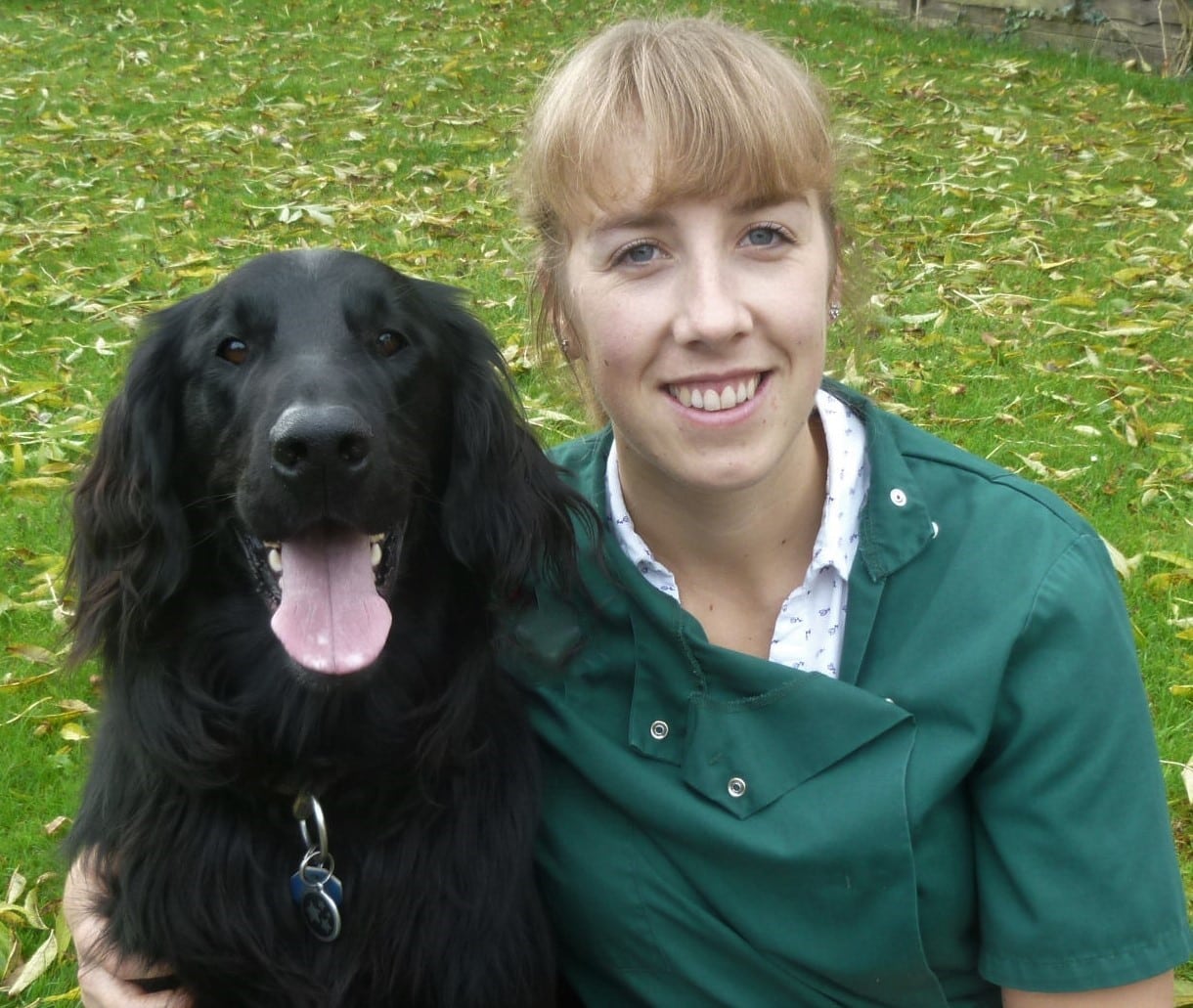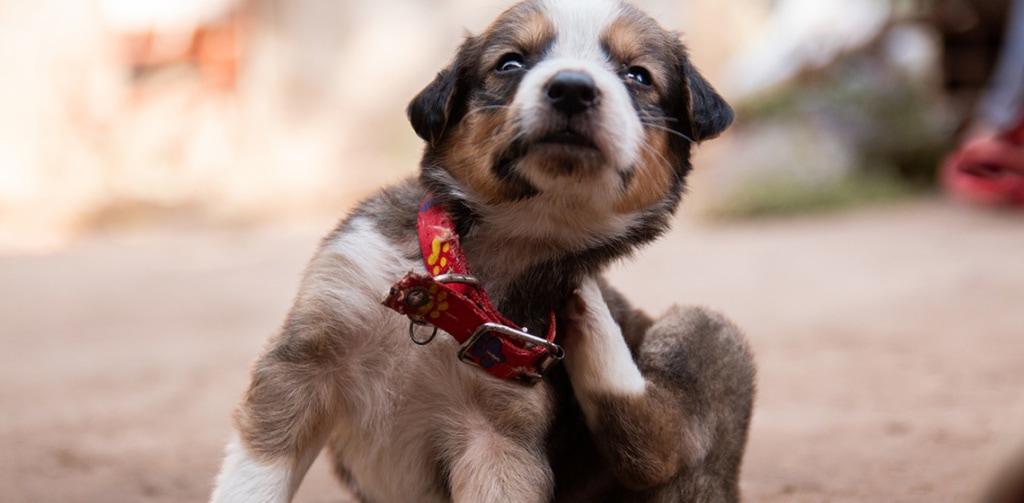Fleas are one of the most common parasites seen in our pets. This small wingless insect can quickly multiply, biting not only our animals but us as well! In this article, we will explore what flea eggs look like, but also the rest of the flea life cycle too. Most importantly we will also look at how to successfully get rid of them!
Table of Contents
The flea life cycle
Ctenocephalides felis (known as the cat flea) is one of the most common parasites that veterinarians see in practice. This parasite is not fussy and will infect cats, dogs, and rabbits as well as biting humans too. These bites are itchy and uncomfortable but can also transmit disease.
There different stages that fleas go through as they develop are referred to as the flea life cycle.
- The start of this cycle occurs when adult fleas hatch out of a cocoon on the ground and hop onto your pet. The fleas will then feed on your pet, drinking blood and reproducing. This can make your pet feel quite itchy.
- Adult fleas can lay up to 50 eggs a day, which roll and fall off your pet into the environment.
- These eggs hatch out into larvae which feed on organic debris. After a period of feeding, the larvae then spin themselves in silk forming a pupa. This sticky pupal cocoon becomes covered in dust and debris becoming disguised, for weeks or even months if required, until an animal passes by. Then the life cycle starts all over again.
Approximately 90% of the flea life cycle takes place in the environment (eggs, larvae, and pupae) and not on the pet itself.
Identifying different stages of the flea life cycle
What do adult fleas look like?
An adult flea is a brownish-red, wingless insect. They are approximately 1-3mm in size and can be quite speedy, darting and hiding quickly amongst your pet’s fur. Sometimes it can be easier to spot flea ‘dirt’ (flea poo) in your pet’s coat which appears like browny-black flecks.
What do flea eggs look like?
Flea eggs are small and oval. They are white in color and may appear as small pale specks in your pet’s coat or bedding. They are approximately the size of a grain of salt so may not be that easy to spot, especially if your dog has light-colored fur. The eggs are smooth and designed to roll off your pet into the house and garden, where they hatch out into larvae within 2 – 12 days.
What do flea larvae look like?
Flea larvae look like small pale wriggly worms that are around 2-5 mm in length. Their instinct is to crawl into dark cracks and gaps in the environment. It doesn’t matter if this is in the carpets or sofas, between floorboards, or in the grass outside. So, these may be hard for you to spot as they tend to be hidden.
What do flea pupae look like?
Flea pupae are rarely visible because the cocoon that they are inside is well camouflaged. They are about the same size as an adult flea, but the sticky silk that forms the cocoon becomes covered in dust and debris. This disguises the pupa, making it look like a little bit of dust or dirt, buried deep in the fibers of your carpet or between your floorboards.
Treat your dog with a flea product that contains insect growth regulators to stop eggs from developing and treat your house with flea spray and lots of hoovering.
How to get rid of flea eggs and break the flea life cycle
Approximately 90% of the flea life cycle takes place in the environment (eggs, larvae, and pupae) and not on the pet itself. Getting rid of flea eggs is also only part of the problem, so you need to approach the problem in two ways to be successful when dealing with a flea infestation.
Treat your pet
You should make sure your dog has an effective flea product that kills any adult fleas on him and also has an insect growth regulator to stop the development of flea eggs. One of our vets can advise you on the most suitable product for your pet.
Treat your home
As we know, most flea eggs are not on your pet, they roll off into your home. Treat your house with a veterinary-recommended chemical spray to kill any eggs in the environment. Many sprays will be effective against adult fleas and flea larvae too.
Unfortunately, pupae are quite resistant to these products so you won’t eliminate fleas altogether with a spray. However, any adult fleas hatching out of their pupa will land on your pet wearing their effective flea product and will die. It can just take a few weeks for this to happen.
You can also hoover your house to reduce the number of eggs, and the vibrations encourage pupae to hatch out quicker. Hot washing the bedding will also help reduce flea egg numbers.
Conclusion
Flea eggs can be quite hard to spot but you may notice other signs of a flea problem, such as flea dirt in your pet’s coat or excessive scratching. Getting rid of flea eggs and the associated fleas means using an effective flea treatment on your pet, as well as taking some measures to reduce numbers in the environment too. Using a preventative flea treatment on your pet is the easiest way to keep on top of fleas and to stop problems like this from occurring!
FAQ
Flea eggs don’t usually live on humans. Fleas usually bite us by mistake, preferring other animals as their hosts. Even if a flea were to reproduce on you the eggs are designed to fall off so they can hatch out in the environment.
It might technically be possible to squish a flea egg but you would probably find it difficult given the size of the egg, it would be like trying to squash a grain of salt! Plus, you would struggle to find absolutely all the flea eggs on your pet and in the environment, so it is not the most effective way of getting rid of them.
Technically flea eggs can hatch out all year round, especially in our modern temperature-controlled homes. However optimum conditions tend to be in the warmer and more humid spring and summer months.
A combination of treatments is needed to kill eggs on your pet and the many that will have fallen on the floor too. Treat your dog with a flea product that contains insect growth regulators to stop eggs from developing and treat your house with flea spray and lots of hoovering.

Rebecca is a companion animal vet who has always had a passion for writing and client communication. Since her graduation from the Royal Veterinary college in 2009, she has gained a wealth of experience in first opinion small animal practice, in both clinical and managerial roles. She currently works in the South West and deals with a variety of routine and emergency appointments, but particularly enjoys medicine cases. Outside of work and writing, she enjoys spending time with her family, including her bouncy flat-coated retriever George!








